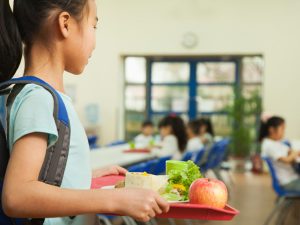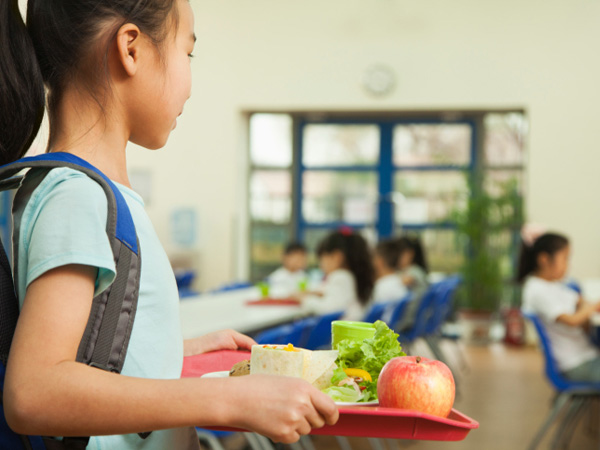2022: Get to know the school lunch programme (USA)
Whether it is a wonderful memory of a cafeteria staff person or a favorite meal enjoyed with friends, we all remember the time spent in the school cafeteria. The National School Lunch Program was established in 1946 to provide students access to nutritionally balanced meals. The U.S. Department of Agriculture, or USDA, continues to fund the program and to ensure that healthful lunches are affordable to all.

Thanks to the USDA’s Healthy, Hunger-Free Kids Act of 2010, school meals look a lot like MyPlate, the government’s roadmap for nutritious eating. MyPlate creates a common language for school nutrition professionals and students and the accompanying visual helps school children connect to the food they see on their plates.
Who Makes the Rules?
Regulations regarding what kinds of foods schools should serve to students are approved by the USDA, and each state administers the program. In 2007, the USDA reported that school meals were not providing a variety of whole grains, fruits and vegetables and were serving a higher than recommended amount of saturated fat and sodium. The concerning state of affairs prompted changes in the program. The 2010 Healthy, Hunger-Free Kids Act mandated updates to the meal requirements, which included more fruits, vegetables and whole grains, fewer calories and less sodium. A new rule titled “Child Nutrition Programs: Flexibilities for Milk, Whole Grains, and Sodium Requirements”, which went into effect in 2019, offers more flexibility for menu planning in schools compared to the original 2010 Act.
Here’s what you need to know about today’s school lunch programs.
A Bigger Focus on Fruits and Vegetables
Potentially the most powerful MyPlate message is advice to fill half your plate with fruits and vegetables at each meal. Schools serve fruit every day at breakfast as well as a fruit and a vegetable at lunch. School nutrition professionals understand that increasing the amount of fruits and vegetables on the menu doesn’t always mean kids will eat more of them. Schools are becoming more strategic about serving produce in ways that will increase kids’ interest and consumption. That means slicing fruit and vegetables into bite-sized pieces and serving them with dips, tossing fruit into yogurt parfaits, and mixing vegetables into side dishes such as brown rice, grain salads and roasted potatoes.
Grains Are Getting a Whole Lot Healthier
In keeping with MyPlate’s message to make at least half of all grains whole, schools are boosting whole grains in bread, tortillas, pizza crust and pasta so that half of the grains offered at either breakfast or lunch each week are from whole grain sources. They also are incorporating more whole-grain flour into baked goods such as muffins and pancakes.
Protein Slims Down
Most school-aged kids need 4 to 6½ ounces of protein each day. To keep it heart-healthy, MyPlate encourages fish, skinless chicken and lean meat as well as plenty of plant-based protein. This might include menu items such as oven-baked fish nuggets, chicken teriyaki, and lean beef or bean burritos on whole-wheat tortillas. When it comes to plant-based protein, schools are getting creative — they’re offering options such as tofu stir-fries and bean burgers and tacos.
Milk Got a Makeover
MyPlate isn’t just about what’s on the plate. Drinks count too. The latest rule now allows schools to offer 1% flavored milk to encourage milk intake, in addition to unflavored fat-free and low-fat options. To help kids get even more of the bone-building calcium they need, schools also are jumping on the growing popularity of low-fat yogurt, serving up low-fat yogurt cups and parfaits and even yogurt-based dips.
Getting Financial Assistance
If you’re having trouble paying for your children’s lunch, your family may be eligible for free or reduced cost lunches through the USDA. Income eligibility guidelines can be found on the USDA’s website. If your family meets the income guidelines and you have not yet filled out an application, be sure to request one from the school. If your child has medical or other special dietary needs, talk to the school foodservice director about accommodations. Want to know more about what’s happening in your child’s school? Get to know your foodservice and nutrition staff!
COVID-19 and School Lunch
Learn how the National School Lunch Program may be different for your school during the 2021-2022 school year, while navigating the COVID-19 pandemic – click here to visit the USDA website.


Leave a Reply
You must be logged in to post a comment.